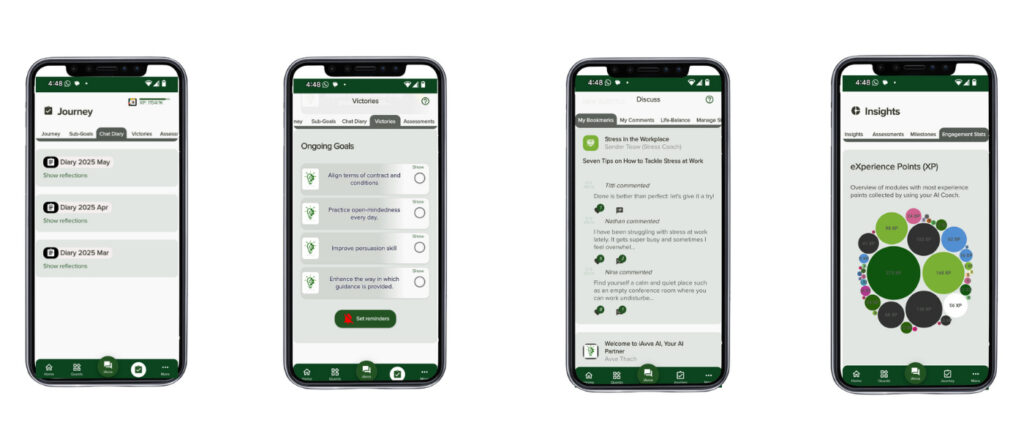The corporate instructor plays a pivotal role in shaping the workforce of an organization. This individual is not merely a facilitator of knowledge; they are a catalyst for change, responsible for equipping employees with the skills and competencies necessary to thrive in a dynamic business environment. A corporate instructor must possess a deep understanding of both the subject matter and the organizational culture, allowing them to tailor their approach to meet the unique needs of their audience.
Their influence extends beyond the classroom, as they help to foster an environment where learning is valued and encouraged. Moreover, the corporate instructor serves as a bridge between management and employees, translating strategic objectives into actionable training initiatives. They must be adept at identifying gaps in knowledge and skills, ensuring that training programs align with the organization’s goals.
This requires not only expertise in instructional design but also strong interpersonal skills to engage and motivate learners. By establishing rapport and trust, corporate instructors can create a safe space for employees to explore new concepts and challenge existing paradigms, ultimately driving innovation and performance.
Key Takeaways
- Corporate instructors play a crucial role in developing and delivering effective training programs to enhance employee skills and knowledge.
- Identifying the training needs of the organization is essential for creating targeted and impactful training programs that address specific skill gaps and challenges.
- Developing effective training programs involves careful planning, content creation, and delivery methods that cater to the learning styles and preferences of employees.
- Implementing interactive and engaging training methods can significantly improve employee engagement and knowledge retention during training sessions.
- Incorporating real-world examples and case studies into training programs can help employees apply their learning to practical situations and improve their problem-solving skills.
Identifying the Training Needs of the Organization
Identifying the training needs of an organization is a critical first step in developing effective training programs. This process involves a thorough analysis of current competencies, performance gaps, and future skill requirements. Engaging with stakeholders at various levels—such as management, team leaders, and employees—can provide valuable insights into the specific areas where training is needed.
Surveys, interviews, and focus groups can be employed to gather qualitative and quantitative data that inform the training strategy. Additionally, organizations should consider external factors that may influence training needs, such as industry trends, technological advancements, and regulatory changes. By staying attuned to these developments, corporate instructors can ensure that their training programs remain relevant and forward-thinking.
A comprehensive needs assessment not only helps prioritize training initiatives but also fosters a culture of continuous improvement, where learning is seen as an integral part of professional development.
Developing Effective Training Programs

Once training needs have been identified, the next step is to develop effective training programs that address those needs. This involves creating a structured curriculum that outlines learning objectives, content delivery methods, and assessment strategies. A well-designed program should be aligned with the organization’s goals while also being flexible enough to accommodate different learning styles and preferences.
Incorporating a variety of instructional methods—such as lectures, group discussions, hands-on activities, and e-learning modules—can enhance engagement and retention. Furthermore, it is essential to establish clear metrics for success when developing training programs. These metrics should be tied to both individual performance and organizational outcomes, allowing for a comprehensive evaluation of the program’s effectiveness.
By setting measurable goals, corporate instructors can track progress and make data-driven adjustments to improve the training experience continuously. Ultimately, effective training programs empower employees to apply their newfound knowledge and skills in real-world scenarios, driving both personal growth and organizational success.
Implementing Interactive and Engaging Training Methods
| Training Method | Engagement Level | Effectiveness |
|---|---|---|
| Role-Playing | High | Effective in developing interpersonal skills |
| Simulation Exercises | High | Effective in real-life scenario training |
| Interactive Workshops | Medium to High | Effective in promoting collaboration and problem-solving |
| Game-Based Learning | High | Effective in enhancing motivation and knowledge retention |
In today’s fast-paced corporate landscape, traditional lecture-based training methods are often insufficient to capture learners’ attention and foster meaningful engagement. To combat this challenge, corporate instructors must implement interactive and engaging training methods that encourage active participation. Techniques such as role-playing, simulations, and group activities can create immersive learning experiences that resonate with participants on a deeper level.
Moreover, incorporating gamification elements into training programs can significantly enhance motivation and retention. By introducing game-like features—such as points, badges, and leaderboards—corporate instructors can create a sense of competition and achievement among learners. This approach not only makes learning more enjoyable but also encourages collaboration and teamwork as employees work together to solve problems and complete challenges.
Ultimately, interactive training methods foster a more dynamic learning environment that promotes knowledge retention and application.
Incorporating Real-World Examples and Case Studies
One of the most effective ways to enhance training programs is by incorporating real-world examples and case studies that illustrate key concepts in action. By presenting learners with relatable scenarios, corporate instructors can help bridge the gap between theory and practice. Case studies allow participants to analyze complex situations, consider various perspectives, and develop problem-solving skills that are directly applicable to their roles within the organization.
Additionally, drawing on success stories from within the organization can inspire employees and demonstrate the tangible benefits of applying new skills. Highlighting how colleagues have overcome challenges or achieved significant results through training reinforces the value of continuous learning. By contextualizing training content within real-world frameworks, corporate instructors can create a more impactful learning experience that resonates with participants and encourages them to apply their knowledge in their daily work.
Utilizing Technology and Multimedia Tools for Training

Incorporating technology and multimedia tools into training programs can significantly enhance the learning experience for employees. The use of e-learning platforms, virtual classrooms, and mobile applications allows for greater flexibility in how training is delivered. Employees can access training materials at their convenience, enabling them to learn at their own pace while balancing their work responsibilities.
Multimedia tools—such as videos, podcasts, infographics, and interactive quizzes—can also enrich the content being presented. These resources cater to various learning styles and help maintain engagement throughout the training process. For instance, visual learners may benefit from video demonstrations or infographics that summarize key points, while auditory learners may prefer podcasts or discussions that facilitate deeper understanding.
By leveraging technology effectively, corporate instructors can create a more inclusive learning environment that meets the diverse needs of their workforce.
Evaluating the Effectiveness of Training Programs
Evaluating the effectiveness of training programs is essential for ensuring that they meet their intended objectives and deliver value to both employees and the organization as a whole. This evaluation process should begin with establishing clear metrics for success during the program’s development phase. Common evaluation methods include pre- and post-training assessments, participant feedback surveys, and performance metrics tied to specific business outcomes.
By analyzing this data, corporate instructors can gain valuable insights into what aspects of the training were successful and which areas may require improvement. Continuous evaluation not only helps refine existing programs but also informs future training initiatives by identifying emerging needs or trends within the organization. Ultimately, a robust evaluation process fosters accountability and ensures that training investments yield measurable returns.
Providing Ongoing Support and Follow-Up Training
Training should not be viewed as a one-time event but rather as part of an ongoing journey toward professional development. Providing ongoing support and follow-up training is crucial for reinforcing learning outcomes and ensuring that employees continue to build on their skills over time. This can take various forms, such as refresher courses, mentorship programs, or access to additional resources that encourage continuous learning.
Moreover, creating opportunities for employees to share their experiences and insights with one another can foster a collaborative learning environment. Peer-to-peer learning initiatives—such as lunch-and-learn sessions or discussion forums—allow employees to exchange knowledge and best practices while reinforcing their own understanding of key concepts. By prioritizing ongoing support and follow-up training, organizations can cultivate a culture of continuous improvement that empowers employees to reach their full potential.
Fostering a Culture of Continuous Learning within the Organization
Fostering a culture of continuous learning is essential for organizations seeking to remain competitive in an ever-evolving business landscape. This culture encourages employees to embrace lifelong learning as an integral part of their professional development journey. Corporate instructors play a vital role in promoting this mindset by modeling a commitment to learning themselves and advocating for its importance throughout the organization.
Leadership support is also crucial in establishing a culture of continuous learning. When executives prioritize professional development initiatives and allocate resources toward training programs, it sends a clear message about the value placed on employee growth.
By creating an environment where learning is celebrated and encouraged, organizations can inspire employees to take ownership of their development while driving overall performance.
Collaborating with Other Departments and Teams for Training Initiatives
Collaboration across departments is essential for creating comprehensive training initiatives that address the diverse needs of an organization. By working together with other teams—such as human resources, operations, or marketing—corporate instructors can gain valuable insights into specific challenges faced by different departments. This collaborative approach ensures that training programs are relevant and tailored to meet the unique requirements of each team.
Furthermore, cross-departmental collaboration can lead to innovative training solutions that leverage diverse perspectives and expertise. For example, involving subject matter experts from various departments in the design process can enhance content quality while fostering a sense of ownership among participants. By breaking down silos and encouraging collaboration between teams, organizations can create more effective training initiatives that drive engagement and performance across the board.
Measuring the Impact of Training on Corporate Performance
Ultimately, measuring the impact of training on corporate performance is essential for justifying investments in professional development initiatives. Organizations must establish clear connections between training outcomes and key performance indicators (KPIs) such as productivity, employee retention rates, customer satisfaction scores, or revenue growth. By tracking these metrics over time, corporate instructors can demonstrate how effective training contributes to overall business success.
Additionally, conducting regular reviews of training programs in relation to organizational performance allows for continuous improvement based on data-driven insights. This iterative process not only enhances the effectiveness of future training initiatives but also reinforces the value of investing in employee development as a strategic priority for achieving long-term success. By measuring impact effectively, organizations can ensure that their commitment to continuous learning translates into tangible results that benefit both employees and the organization as a whole.
In the rapidly evolving landscape of corporate training, leveraging AI solutions has become increasingly essential for enhancing learning experiences and outcomes. A related article, “AI Solutions for Education and Corporate Training: Revolutionizing Learning,” delves into how AI technologies are transforming traditional training methods. This piece explores various AI-driven tools and strategies that can be integrated into corporate training programs to improve efficiency, engagement, and personalization, making it a valuable read for corporate instructors looking to stay ahead in their field.
FAQs
What is a corporate instructor?
A corporate instructor is a professional who is responsible for designing, developing, and delivering training programs for employees within a corporate setting. Their goal is to improve the skills, knowledge, and performance of the employees.
What are the responsibilities of a corporate instructor?
The responsibilities of a corporate instructor include conducting training needs assessments, designing and developing training materials, delivering training sessions, evaluating the effectiveness of training programs, and continuously updating and improving training content.
What skills are required to become a corporate instructor?
To become a successful corporate instructor, one needs to have strong communication and presentation skills, the ability to design and develop training materials, knowledge of instructional design principles, and the ability to adapt training methods to different learning styles.
What are the benefits of hiring a corporate instructor?
Hiring a corporate instructor can lead to improved employee performance, increased job satisfaction, higher employee retention, and a more skilled and knowledgeable workforce. It can also lead to a positive impact on the overall productivity and success of the organization.
How can one become a corporate instructor?
To become a corporate instructor, one typically needs a bachelor’s degree in a relevant field, such as education, instructional design, or human resources. Additionally, gaining experience in training and development, obtaining certifications in instructional design or training, and continuously improving one’s skills and knowledge in the field are important steps to becoming a corporate instructor.




















Leave a Reply